
IF you have never grown roses before, it is not difficult, just a few things to think about, where and how to plant them How to Plant a Climbing Rose, how to care for climbing roses (where we are now) and how to prune a climbing rose Pruning Climbing Roses.
For the best results, Roses need at least 6 hours of sunlight a day, with climbing roses this task is easier as they will grow above the rest and usually achieve 8 to 10 hours a day, as long as they planted on a sun facing object. While there are 100's of different varieties of roses there are only a few varieties that enjoy part shade, be sure to read the characteristics prior to purchasing roses.
Roses and Climbing Roses are very hardy and suitable for growing across the UK and Ireland. Climbing roses have been a popular choice for centuries and can be found in almost every English Garden. Roses are romantic and are a beautiful addition to any garden. Roses and Climbing Roses have a practical use as well, with the aid of supports and trelises, Roses can climb to hide or conceal structures, adding beauty to a blank walls etc.
Roses need really good quality soil to suceed and produce the best results.
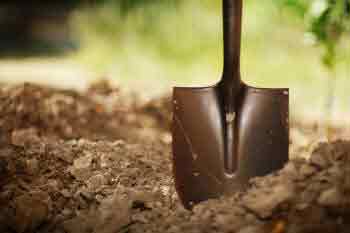
Geographical we all have different soil quality and the quality of the soil on day one will be different to day 365. We have a very large section on soil and soil types
Sandy soils and Clay soils are unfortunately not very suitable for growing roses, Sandy soils do not hold water very well, if you have sandy soil please read how to improve the quality of sandy soil. Clay soils tend to smother plants, it is very heavy, claggy and clumpy, and when it drys out it cracks, separating and breaking the roots. If you have clay soils please read How to improve the quality of Clay Soils
All other soil types are good for growing roses as long as it is Well Drained

You may have an idea or what you think is the perfect location to plant your climbing roses, planning makes perfection. The most important aspect in chosing your location the amount of sunlight your new roses will recieve. They require a minimum of 6 hrs direct sunlight per day to ensure healthy growing conditions. The soil quality can be altered to suit their growing conditions, so that is not a big deal. You may have a perfect wall but no boarder to grow them in, then think about buying or making a trough or using planters. Roses are equally as happy in containers as long as they are deep, roses are deep rooters. Finally you need some structure or trellis for the roses to climb up. This has be strong and solid enough to support fully grown roses, they can get heavy so you must plan and secure this in place before planting out your roses.
The best times to plant Roses is either in October / November or March / April. Preparation is key, find your ideal position for their growing conditions as below, ensure the soil conditions are ideal as above and we are good to go.
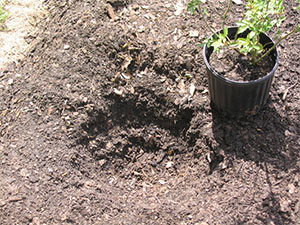
Your new Roses will be either delivered / purchased bare rooted or in a pot, gently remove all packaging or pot, remove all excess soil without damaging the roots, you can gently shake the tree holding it firmly at the base or manually break apart the soil clumps with your fingers. It is best to remove as much soil as possible as you can not be certain of the soils origin. The new rules from DEFRA (2020) state mail order trees must have a passport, stating the trees origin and maker and importer etc, purchases from the garden centre and other outlets dont come with a passport.
Measure away from the climbing support 40 cm, this is where the center of your bush will be planted. Visually measure the root system mass and dig a hole twice the width size of this but keep to about the same depth. Place the bush in the newly dug hole, ensuring it is still at the right distance and keeping the bush upright, gently fill in the soil around. Dont pack in the soil too hard but dont leave in any air gaps, once it is full and self standing, gently press down with you foot on either side of the bush. Too lightly and the bush may topple, too firm and the roots cant expand.
Depending upon the variety and the look you want to achieve, when planting in a row, keep them atleast 40 cm apart.
Once you have finished planting the row of roses you can water them and then i suggest you leave them a week to get established before you start to train them.
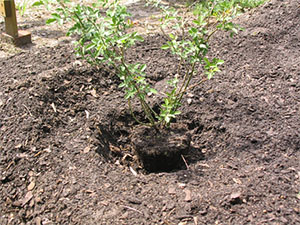
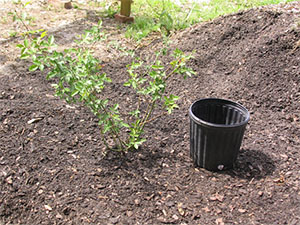
Climbing Roses structure contains verticle growing stems, which when mature, they are very much hard wood, as a young plant they are soft wood and can be plyable and can be trained to grow in any verticle direction. Branching off are soft wood shoots / branches, these grow more horizontally and can droop down when flowering. Therefore your trellis should contain a grid system of verticle and horizontal supports, it is good practice to leave a small 1cm gap behind the trellis, if against a solid structure, dont make it flush. You need to use ties to connect the rose to the trellis, you can use either string or elastic bands.
I use elastic bands to connect, usually a chain of 3 or 4 bands, tie the first one around the verticle supports of the trellis, approximately 20cm off the ground and continue at 20 cm intervals upwards, and repeat horizontally. I would probably do this prior to errection as it may be fiddley afterwards. Connect one band loosely around the stem, to allow movement and growth. Connect the two together with either elastic bands or string, make it a gradual pull towards the frame or structure, do not make too much strain on the bush, you can return later to tighten them up if required. As the Rose Bush grows you keep connecting it vertically and horizontally, eventually the rose bush will grow naturally in the directions you have trained it to grow.
Before you attempt to prune your climbing rose, you have to be certain that it is a climbing and not a rambling rose type! A quick, more or less fail-proof test, is to ensure that your climbing rose has its leaves in groups of five leaflets.
Once you establish that you have Climbing Rose and not a Rambler, then follow the pruning advice below.
For the first two or three years after planting, your new climbing rose will not require any pruning. During this initial period, your climbing roses should send up a few long stems, which can be trained into a basic framework for your future climbing rose's shape.
The annual pruning of your climbing rose takes place once you have the basic framework.
Try to get a framework of stems trained horizontally along wires or trellis framework. There will be more rose flowers from horizontal stems than vertical upright stems.
Once you have a framework of horizontal stems - after two to three years - then you are into the regime of pruning your climbing rose each year.
This is the process of removing flowers from your plant once they are dying or dead. This will help your rose to redirect its energy into making new flowers. Cut the dead rose away, cutting just before the first leaf down.
From the horizontal older framework of branches on your climbing roses, you will find new shoots will sprout along the main branches from early spring. In early summer - or right after flowering, if they flower - cut back these shoots to within 4-6in of the main lateral stems. The new shoots that then grow from these pruning cuts, will be your flowering shoots for next year. Depending upon variety, these new shoots will grow to around 10-12in and produce flowers early summer the following year.
Climbing roses flower best on stems that were produced the previous year, so pruning of your climbing rose each summer is important if you are to obtain the best results for the following year.
The images below can be enlarged by clicking. Left image shows climbing rose immediately after flowering - note the recently flowered growths. Right image, shows how the rose will be pruned in order to get more new shoots for flowering next year.
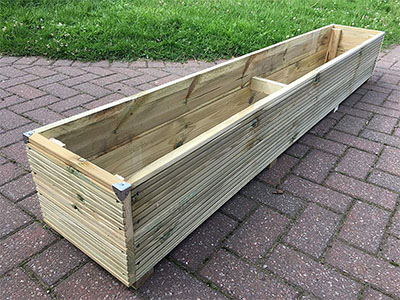
If you have a nice patio with a bare wall and the idea of growing climbing roses pops into mind, but you do not want to dig up your patio to create a boarder. Then growing them in pots, or as i recommend using a planting trough is ideal.
Rose bushes have a deep root system therefore use a planter or a trough of around 45 cm deep and a minimum width of 60 cm. There are litterally 1,000s of different types and styles on the market and prices. Depending upon the look you want, the trough pictured is a mid range example of 6ft long for £40 (2020).
I do prefer the planting trough over a pot because of the roots and more than likely you are going to plant 2 or 3 plants against a wall. Always check the roses characteristics before buying them, are they fit for purpose? some varieties can grow upto 12ft in height and width so chose carefully, View our best 12 Climbing Roses for ideas.
Upon purchasing your container (We have a large Container Section) ensure it has drainage holes, if not, you will have to make some, most are ready made. Additionally purchase some horticulture Sand, Gravil and soil addatives / compost, Roses need really good quality soil to suceed and produce the best results. Geographical we all have different soil quality and the quality of the soil on day one will be different to day 365. We have a very large section on soil and soil types. Firstly line the bottom of your container with an inch of Gravil and then add an inch to two inch of horticulture sand, this ensures drainage and moisture containment. Then add your soil / compost mix and add your roses. Very simple.
The Majority of climbing roses have very healthy appetities and need feeding regularly. We advise you use an NPK fertilizer which can be either organic (a mixture you can make up yourselves) or an inorganic mix ( purpose made mixture bought from a garden center). You may wish to read up on N.P.K., What it is and how to make it.
When you first plant out your climbing roses you need to add an handfull of bone meal and phosphorus to your mix of soil and N.P.K. fertilizer, this helps the root system to develop.
The first feed of the year will be in early spring, just as the weather turns and the buds start to form. Apply a healthy dosage of fertilizer to the base of the bush, I have turned to liquid fertilisers, makes it easy to mix. You can add fish meal, liquid seaweed and other nutrients to your N.P.K. mixtures. You can try anything, how times to you hear "Its a secret recipe"
Roses are in full bloom in mid to late spring and your first application of fertilizer will be eaten up by the hungry plant. As your first bloom is coming to an end, you should be in the practice of deadheading, the day after, you should apply your second feed of the year.
Apply your third feed of the year at the end of the summer, as the weather starts to cool down, but before the start of the Autumn season.
Roses do have a deep root system, this means they do not need to be watered as ofter. In the height of summer, the top soil layers become dry but the bottom layers are still moist. Where as most of your garden need watering daily, roses only need watering weekly. This is just a guideline, you know your garden and the recent weather paterns and conditions.
The first watering of the year should come in later spring and the last time should be in Autumn.
When watering, only water at the base, do not water the leaves to avoid leaf scorch and disease.
Mulching the soil in the garden is one of the most positive things you can do to improve soil fertility, conserve moisture and help your plants grow well. It is also an environmentally friendly activity and is the basis of a good organic approach to growing. It is one of the basic ways in which plant life in the wild provides its own food, and ensures its own survival. Read More
Many types of mulch are duo purpose, in that they can be used as an ornamental covering or strictly for cultivation reasons. Many ornamental mulches will also add to the cultivation aspect, as they break down - decompose - over time.
Organic mulches - simply laid on the soil - will eventually be broken down and taken into the earth where the material is further broken down by the myriad of soil organisms that exist simply for that purpose. It is a natural process that has been going on since plants started to live.
Earthworms are instrumental in the process - taking dead and decaying matter into the soil. Once broken down in the soil, the organic matter is generally classed as humus - a vital substance for the building up of a rich fertile soil.
It is best practice to Mulch over winter, to protect the root system from the frosty weather and to provide a gently feed over winter. Prepare the ground by removing debris and weeds and water the surface of the soil and apply your mulch mix all around the roses.
If the weather conditions are expected to be extreme, you should provide your climbing rose bushes with some protection. You can use sacking, horticultural fleece or even some bin liners to make sure your bushes don’t get frost damaged, Remove this protection when the worst of the winter frosts have passed.
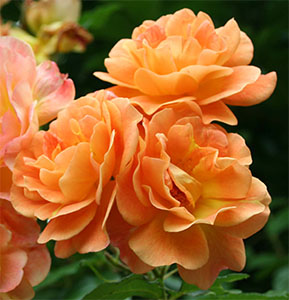
Climbing Roses are generally mutations or sports of normal bush roses (Hybrid Tea and Floribunda Types) though are sometimes specifically bred. Climbing roses are better for growing against a wall than Ramblers. They are less likely to suffer from mildew because of the poor air circulation.
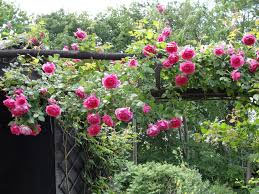
Climbing Roses
Planting a Climbing Rose needs a bit of attention with regards to the suitability of the soil in the long term and also the supports that will be required to successfully grow your climbing rose for many years.
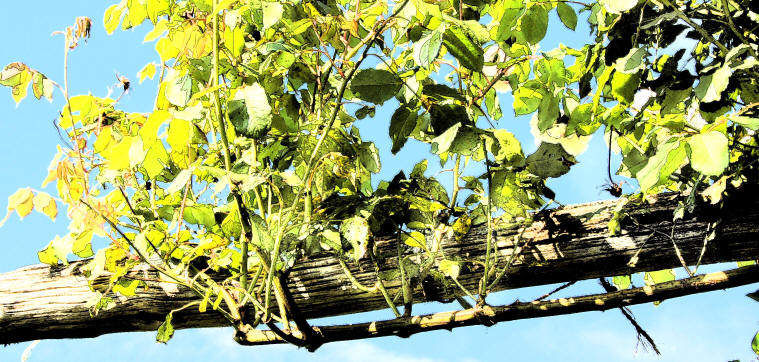
How to Prune a Climbing Rose
For the first two or three years after planting, your new climbing rose will not require any pruning. During this initial period, your climbing roses should send up a few long stems, which can be trained into a basic framework for your future climbing rose's shape.